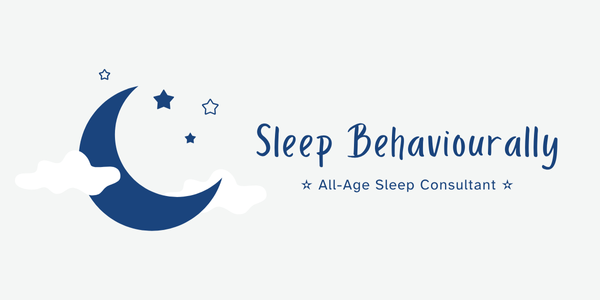You used to have a baby who slept like, well, a baby. But now, at around four months old, your little one is suddenly waking up all night long, fighting naps, and is generally fussy and irritable. If this sounds familiar, you’re likely in the throes of the infamous 4-month sleep regression. It’s a challenging time for parents, but rest assured, you’re not alone, and this phase is both normal and temporary. This article will guide you through why this sleep disruption happens, what to expect, and most importantly, how to survive it with your sanity intact.
What is the 4-Month Sleep Regression?
The 4-month sleep regression is a period when a baby who was previously sleeping well suddenly starts experiencing frequent night wakings, shorter naps, and difficulty settling. While it’s called a “regression,” it’s actually a sign of significant developmental progress. Around this age, your baby’s sleep patterns are maturing from the simple, two-stage sleep of a newborn to the more complex, multi-stage sleep cycles of an adult. This transition is a permanent biological change, and it’s a positive sign that your baby’s brain and nervous system are developing as they should. The term “regression” simply refers to the temporary disruption in sleep that occurs as your baby adjusts to these new sleep patterns. This phase typically occurs between three and four months of age, but for premature babies, it may happen a bit later, based on their adjusted age.
Why Does the 4-Month Sleep Regression Happen?
The primary reason for the 4-month sleep regression is the significant neurological development happening in your baby’s brain. Their sleep architecture is undergoing a major transformation, shifting from the basic sleep patterns of a newborn to the more sophisticated sleep cycles of an adult. Newborns have only two sleep stages, but by four months, your baby is transitioning to a four-stage sleep cycle, just like you. This means they now experience lighter and deeper stages of sleep. As they cycle through these stages, they have brief awakenings. While adults can typically roll over and fall back asleep without even noticing, babies at this age haven’t yet mastered the skill of self-soothing. When they wake up between sleep cycles, they often need the same comfort and assistance they received at bedtime—be it rocking, feeding, or cuddling—to fall back asleep. This is why you’re suddenly getting so many more wake-up calls at night. Other contributing factors can include increased awareness of their surroundings, which can be overstimulating, and even the beginnings of separation anxiety.
Signs and Symptoms to Watch For
While every baby is different, there are several common signs that indicate your little one has hit the 4-month sleep regression. You might notice a sudden and dramatic worsening of night sleep, with your baby waking up much more frequently than before. Naps may become shorter, often lasting only 30-45 minutes, and your baby may fight going to sleep at both naptime and bedtime. Increased fussiness and irritability are also common, as your baby is likely overtired from the lack of restorative sleep. You may also notice a decrease in their total sleep time and disruptions to their feeding schedule. It’s important to remember that not all babies will experience all of these signs, and the intensity of the regression can vary widely from one baby to another.
How Long Does the 4-Month Sleep Regression Last?
One of the most pressing questions for exhausted parents is, “How long will this last?” The 4-month sleep regression doesn’t have a fixed timeline, as it’s a permanent change in your baby’s sleep patterns. However, the acute phase of sleep disruption typically lasts for two to six weeks. During this time, your baby is learning to navigate their new sleep cycles and developing the ability to self-soothe. The duration of this adjustment period can be influenced by several factors, including your baby’s temperament and your approach to managing the regression. With consistency and a focus on healthy sleep habits, you can help your baby through this transition more smoothly and see improvements in their sleep within a few weeks.
Survival Strategies: How to Navigate the 4-Month Sleep Regression
Surviving the 4-month sleep regression is all about consistency, patience, and a focus on building healthy sleep foundations. Here are some strategies to help you and your baby get through this challenging phase.
Establish Healthy Sleep Foundations
First and foremost, ensure your baby’s sleep environment is safe and conducive to sleep. Follow the American Academy of Pediatrics’ safe sleep guidelines, which include placing your baby on their back to sleep, using a firm sleep surface, and keeping the crib free of soft objects and loose bedding. Create a sleep-friendly environment by keeping the room dark, quiet, and at a comfortable temperature. An age-appropriate sleep schedule is also crucial. At four months, most babies need about 14.5 hours of sleep in a 24-hour period, with 10-12 hours at night and the rest spread out over three to four naps.
Create Consistent Sleep Routines
Babies thrive on routine, and a consistent bedtime routine is one of the most powerful tools in your sleep arsenal. A calming routine, such as a warm bath, a gentle massage, a story, and a quiet cuddle, can signal to your baby that it’s time to wind down and prepare for sleep. A consistent wake-up time and predictable naptime routine can also help regulate your baby’s internal clock. Maintaining a regular feeding schedule throughout the day can also contribute to better sleep at night.
Encourage Independent Sleep Skills
One of the most effective ways to navigate the 4-month sleep regression is to help your baby learn to fall asleep independently. This means putting your baby down in their crib when they are drowsy but still awake. This gives them the opportunity to practice self-soothing and learn how to fall asleep without your help. You can start slowly, perhaps by trying this for the first nap of the day or at bedtime. The goal is to gradually reduce your baby’s dependence on sleep associations like rocking, feeding, or holding to sleep. When your baby can fall asleep on their own at the beginning of the night, they are more likely to be able to put themselves back to sleep during those brief awakenings between sleep cycles.
Manage Night Wakings
When your baby wakes up during the night, it can be tempting to rush in immediately. However, it’s a good idea to pause for a moment to see if they can settle themselves back to sleep. If they continue to cry, offer comfort in a calm and soothing manner. Try to avoid overstimulating your baby with bright lights or playful interaction. If you need to feed your baby, do so in a quiet, dimly lit room and put them back in their crib as soon as they are finished. The key is to be reassuring and supportive without creating new sleep associations.
Optimize Daytime Sleep
Good daytime sleep often leads to better nighttime sleep. While short naps are common during the 4-month sleep regression, you can still create a nap-friendly environment to encourage longer, more restorative sleep. Pay attention to your baby’s sleepy cues and try to put them down for a nap before they become overtired. A consistent naptime routine, similar to your bedtime routine, can also be helpful. And remember, even a short nap is better than no nap at all.
What NOT to Do During the 4-Month Sleep Regression
While it’s important to know what to do, it’s also helpful to know what to avoid. Try not to introduce new sleep associations that you don’t want to maintain long-term, such as rocking or feeding your baby to sleep every time they wake up. Don’t abandon your routines; consistency is key, even when it feels like it’s not working. Resist the urge to bring your baby into your bed to sleep if that’s not a habit you want to continue, as this can create a new sleep association that can be difficult to change later. Avoid comparing your baby to others; every baby is on their own unique developmental timeline. And most importantly, don’t expect immediate results. It takes time and patience for your baby to adjust to their new sleep patterns.
When to Consider Sleep Training
If you’ve been consistent with your routines and strategies for a few weeks and your baby’s sleep is still a major challenge, you might consider sleep training. Sleep training is the process of helping your baby learn to fall asleep independently and self-soothe when they wake up during the night. There are many different sleep training methods, ranging from gentle, gradual approaches to more direct methods. The right method for your family will depend on your parenting philosophy, your baby’s temperament, and your comfort level. It’s a personal decision, and there’s no one-size-fits-all solution. If you’re considering sleep training, it’s a good idea to do your research and choose a method that you feel confident you can follow through with consistently.
Self-Care for Exhausted Parents
The 4-month sleep regression can be incredibly draining for parents. It’s essential to take care of yourself during this challenging time. Set realistic expectations and remember that this phase is temporary. Don’t hesitate to ask for help from your partner, family, or friends. Take turns with night wakings so that you can both get some uninterrupted sleep. Prioritize your own rest whenever possible, even if it means napping when the baby naps. And be kind to yourself. It’s okay to feel frustrated and overwhelmed. Acknowledging your feelings and finding healthy ways to cope with stress can make a big difference.
When to Seek Professional Help
While the 4-month sleep regression is a normal developmental phase, there are times when it’s a good idea to seek professional help. If your baby’s sleep issues persist for more than a few weeks despite your best efforts, or if you’re feeling completely overwhelmed and exhausted, a sleep consultant can provide the guidance and support you need. A sleep consultant can help you create a personalized sleep plan that is tailored to your baby’s specific needs and your family’s values. They can also provide you with the tools and confidence you need to implement the plan successfully. If you have any concerns about your baby’s health or development, it’s always best to consult with your pediatrician.
Conclusion
The 4-month sleep regression is a challenging but temporary phase that marks a significant milestone in your baby’s development. By understanding the science behind this sleep disruption and implementing consistent, healthy sleep habits, you can help your baby navigate this transition and emerge with better sleep skills for the long run. Remember to be patient with your baby and yourself, and don’t hesitate to seek support if you need it. With the right approach, you can survive the 4-month sleep regression and get back to enjoying a well-rested family life. If you’re struggling to implement these strategies or need personalized guidance, we’re here to help. Contact us for a sleep consultation and let us help you and your baby get the sleep you need and deserve.




0 Comments